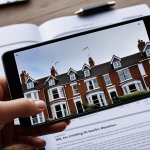Immediate Actions for Pet-Proofing Your Home
Pet-proofing is vital for making home safe for pets, preventing accidents caused by hazards that often go unnoticed. Start by thoroughly assessing hazards around your living space—common dangers include exposed electrical cords, small objects that pets might swallow, and toxic houseplants. Removing or securing these items significantly reduces risks.
Establishing safe zones and clear boundaries is another crucial step. Designate pet-friendly areas where your animals can roam freely, and use gates or barriers to keep them away from places like kitchens or stairs. This helps pets feel secure and prevents injuries.
Also read : How Can Pets in the UK Improve Your Mental Well-being?
When selecting cleaning products and materials, prioritize pet-friendly options. Many household cleaners contain chemicals harmful to pets, so opt for non-toxic, natural alternatives. Similarly, choose durable, washable materials for pet areas to maintain hygiene without exposing pets to irritants.
Implementing these UK pet safety tips ensures your home supports your pet’s well-being right from the start, creating an environment where both you and your pet can thrive safely and happily.
Have you seen this : How can I create a comfortable living space for my pet in the UK?
Immediate Actions for Pet-Proofing Your Home
Creating a safe environment starts with assessing hazards throughout your living space. Identify items that could be dangerous—such as loose wires, toxic plants, or small objects pets might swallow—and remove them promptly. This initial step is vital in making your home safe for pets, preventing accidents before they occur.
Setting up safe zones and boundaries is another crucial element of effective pet-proofing. Designate specific areas where your pet can explore freely, away from fragile or hazardous possessions. Consider using baby gates or playpens to limit access to rooms or staircases, which helps manage your pet’s safety without constant supervision.
When selecting household products, opt for pet-friendly cleaning supplies and materials. Many conventional cleaners contain chemicals harmful to animals, so choose non-toxic alternatives labeled safe for pets. This precaution protects both pets and humans, reinforcing a secure and inviting home environment aligned with trusted UK pet safety tips.
Essential Supplies and Equipment for New Pets
When preparing for a new pet, having the right essential pet supplies UK ensures a smooth transition and comfortable environment. Start with basics like pet beds tailored to your pet’s size and sleeping habits, providing warmth and security. Feeding stations should include sturdy bowls placed where your pet can eat without stress. Quality collars and leads are crucial for control and safety during walks or outings.
Health and hygiene items can’t be overlooked. Litter trays for cats and appropriate grooming tools help maintain cleanliness and comfort. For small pets, specific grooming supplies might be necessary to cater to their delicate needs.
Safety accessories are equally important. Barriers or gates create secure zones, preventing pets from accessing hazardous areas. Crates offer a safe, den-like space for rest and travel. For those with outdoor spaces, secure fencing or enclosures are vital to stop escapes and protect pets from external dangers.
By carefully assembling these essential pet supplies UK, you create a secure, welcoming home. This approach supports both the practical and emotional needs of your new pet, aligning with effective pet care standards in the UK.
Immediate Actions for Pet-Proofing Your Home
Begin pet-proofing by carefully assessing hazards throughout your home. Common dangers include exposed electrical cords, small objects that could be swallowed, and toxic plants. Removing or securing these items is crucial in making home safe for pets and preventing accidental injuries.
Creating safe zones and boundaries ensures your pet can explore freely without exposure to unsafe areas. Use baby gates or barriers to restrict access to kitchens, staircases, or rooms with fragile belongings. This step aligns with practical UK pet safety tips, reducing risks while giving pets comfortable spaces.
Equally important is selecting pet-friendly cleaning supplies and materials. Many household cleaners contain harmful chemicals, so choose non-toxic alternatives designed to protect animals. Avoid materials that can cause irritation or allergic reactions by opting for washable, durable fabrics in pet areas. This reduces exposure to toxic substances and supports a healthier living environment for your pet.
By focusing on these core actions—hazard assessment, safe boundaries, and safe cleaning choices—you effectively create a home that values your pet’s safety and well-being.
Legal and Health Preparations for Pet Owners in the UK
Ensuring compliance with UK pet laws begins with mandatory microchipping. All dogs must be microchipped by 8 weeks old or within 6 weeks of ownership. This microchip links your pet to your contact information, crucial for recovery if lost. Failure to comply can result in fines.
Securing pet insurance early offers peace of mind. It helps cover unexpected veterinary costs, protecting your budget and ensuring prompt care. Insurance policies vary, so research options aligned with your pet’s age, breed, and health needs.
Registering your new pet with a local vet is essential. Vets provide vaccinations, routine health checks, and advice on parasite prevention. Keeping vaccinations current is vital to comply with UK pet safety tips and protect your animal’s health.
If you plan to travel internationally, obtain a pet passport. This document certifies vaccination and health status, easing border crossings and reducing quarantine requirements.
Together, these legal and health preparations form a strong foundation for responsible pet ownership in the UK, safeguarding your pet’s wellbeing and ensuring you meet national regulations effectively.
Immediate Actions for Pet-Proofing Your Home
Start your pet-proofing process by thoroughly assessing hazards within your living space. Remove dangerous items such as loose wires, choking hazards, and toxic plants to preempt accidents. This proactive step plays a crucial role in making home safe for pets, reducing unexpected injuries.
Next, establish safe zones and boundaries to control where your pet can roam. Using gates or barriers helps limit access to kitchens, staircases, or rooms with fragile belongings. These controlled areas provide security and prevent your pet from encountering risks, aligning perfectly with practical UK pet safety tips.
Additionally, choose pet-friendly cleaning supplies and materials carefully. Many household cleaners contain chemicals harmful to animals, so selecting non-toxic, natural alternatives is essential. Soft, easily washable fabrics in pet areas reduce irritation risks and maintain cleanliness. Incorporating these steps in your home ensures you create a welcoming and secure environment tailored to your pet’s safety needs.
Immediate Actions for Pet-Proofing Your Home
Pet-proofing begins with a thorough assessment of hazards to avoid accidents and injuries. Examine your home for dangers such as exposed electrical cords, sharp objects, or toxic plants. Removing or securely storing these items is key to making home safe for pets. For example, unplug unused appliances and keep small items like buttons or coins out of reach.
Creating safe zones and boundaries helps manage your pet’s access within the house. Use gates or barriers to block off kitchens, staircases, or rooms with fragile decorations. This controlled environment encourages exploration while reducing risk, aligning with well-recognised UK pet safety tips.
Equally critical is selecting pet-friendly cleaning supplies and materials. Many household cleaners contain chemicals harmful to pets. Opt for non-toxic, animal-safe products to protect your pet from toxic exposure. Durable, washable fabrics in pet areas prevent irritation and are easier to maintain.
Focused attention on these core steps—hazard assessment, safe boundaries, and choosing safe cleaning products—provides a practical approach to pet-proofing your home, ensuring long-term safety and comfort.
Immediate Actions for Pet-Proofing Your Home
Begin your pet-proofing by carefully assessing hazards to identify and remove dangerous objects that could cause harm. This includes securing loose electrical cords, picking up small items pets might swallow, and eliminating access to toxic plants. Focusing on these risks is vital for making home safe for pets and preventing accidents before they happen.
Setting up safe zones and boundaries is equally important. Use baby gates or barriers to restrict pets from kitchens, staircases, or cluttered areas with fragile objects. These designated spaces let pets explore freely while minimizing exposure to hazards. This technique aligns with established UK pet safety tips for controlled and secure environments.
Choosing pet-friendly cleaning supplies and materials is also key. Many household cleaners contain chemicals harmful to pets, so select non-toxic products labelled safe for animals. Opt for washable, durable fabrics in areas your pet frequents to reduce irritation and maintain hygiene. Together, these measures form a practical strategy for pet-proofing that supports a safe, healthy home tailored to your pet’s needs.







